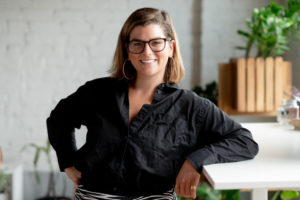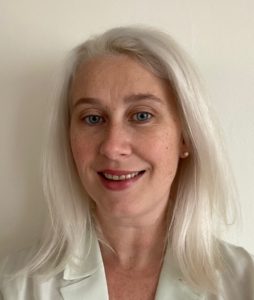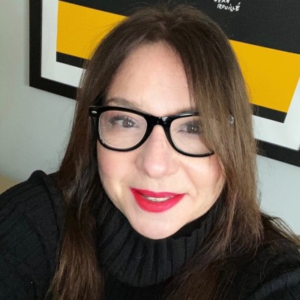Our Speakers
- Patti Sweet, Director of Digital Strategy, Health Affairs
- Lori Carlin, Chief Commercial Officer & Senior Consultant, DeltaThink
- Jessica Lawrence-Hurt, Chief Marketing Officer, Cadmore Media
- Hannah Heckner, VP of Product, Silverchair

HANNAH HECKNER: As Silverchair has been exploring new meeting content assets, one topic that keeps coming up is the difference in approaches towards making ephemeral meetings content pieces more durable. There are different decisions across scientific disciplines and even within disciplines. What are the differences that you’ve seen, or even the differences in your own organization towards deciding which assets from those meetings to make lasting online and which might not get that same touch?

PATTI SWEET: I approach it from a few different angles. From a digital SEO expert, I want all that content online and I want it to be free, or at least scrollable. If it's a video, to have transcription or a deeper abstract or information on the page. We can't give away everything for free, especially when it is a presentation about our content that is behind a paywall.
Earlier this year, we launched a membership program alongside our subscription, and that's where we have access to all of our events. So we're monetizing it and saying, “you get access to our archive of all of our video events.” That way, if something is funded for us, we can put it out freely. We'll still put it on YouTube, we'll put it on our website and then make sure that anyone can see it. But if it has to go behind the paywall, we've actually figured out within our platform how to put it below a login. So you can still review and look at the video. It's still callable by the likes of search engines, but you have to be able to log in before you actually view that video content. It's indexed, but hidden on YouTube as well as on our website.
What that means is that we're able to make business decisions with not only revenue, readership, and to catalog the content in that way. Launching that membership program was a risk for us. We had never done it before and only had our one paid-for product since the inception of Health Affairs in 1981. However, uptake has been strong, so people are willing to pay for it. We did a lot around price-point testing, market research, and stakeholder interviews. Our end user is not the person who gives us money - it’s actually the institution that gives us money. We want to figure out how to get to the end user using our content, that's having their career made from the content that they publish with us.
That is why we put the membership at a very low price point, and our target market is all of our users that have free access. It's something that we've done to try to bundle and monetize events that otherwise weren't behind a paywall. I will also say the strategy behind that was putting a low price point because if I can identify you as a super user who has free access through their institution, I can identify you, I can provide much better messaging, and can send you emails with targeted messaging. I will say that it continues to be a challenge for us, and that's where I spend a lot of my time from overseeing the strategy and analysis. Is it worth us to launch this event? Or do we not get people to show up-- enough people to show up for it? Do we not make enough money off of it? Do we not get an advertiser or sponsor for it? It's a complex ecosystem, but we're making movements in the right direction. I consider that a success to us at this point in time with such an early product.
HANNAH HECKNER: Jessica, when people come to work with Cadmore, they're deciding to make videos of things and want them to be discoverable. It'd be great to hear about some of Cadmore's experiences or things that you're seeing where maybe someone or an organization you are working says we want this video, but we only want it to be available for the first three months after a meeting. Are you seeing some time-based sensitivity with that? Any interesting takeaways you've seen from different approaches there?
 JESSICA LAWRENCE-HURT: Well, the answer to that is yes, we've seen all of it. Everything from, “We want all of this content in front of the paywall for anyone who wants to access it” (where the goal is to just get the word out, and it may be sponsored or funded in some way), all the way to, “This is really high-value content that people paid a lot of money to access in-person., and we also want to get some revenue from people accessing it after the fact.”
JESSICA LAWRENCE-HURT: Well, the answer to that is yes, we've seen all of it. Everything from, “We want all of this content in front of the paywall for anyone who wants to access it” (where the goal is to just get the word out, and it may be sponsored or funded in some way), all the way to, “This is really high-value content that people paid a lot of money to access in-person., and we also want to get some revenue from people accessing it after the fact.”
A fairly common situation has been when you have a virtual meeting and you allow in-person attendees to access the content up to 30 or 60 days after the fact. But I think the goal really is to not just speak to people who attended the conference. We are also seeing someone who would never pay thousands of dollars to travel and attend an event that might be adjacent to their focus area. For example, when you're in a subject area, you generally have three events every year that you have to attend. Those are the main ones in a space, that's where you meet colleagues, it's where you hear about other research. But there are five other spaces that are adjacent or overlap and you are interested in what's happening there. Getting the word out to those people that you don't have to spend thousands of dollars to come in-person to this conference, but maybe there's 5-10 sessions that would be of relevance to your research.
Reaching those people is where marketing comes in. But I hear “we put videos online and nobody came and watched them.” We ask, what did you tell people about them? How did you make it easy for them to access it? Did you make it easy for them to purchase it or to watch it on the device of their choice? How did you determine who to market it to? Who are you actually thinking is the potential audience for you? It may very well be people who have never attended any events in the past.
During the pandemic when everything went virtual, there were some really interesting statistics. In certain subject areas they were seeing something like 50, 60, 70% of attendees were people who had never attended a program from that society in the past. That means that there is an audience for this content out there, but it's probably not the people you've been marketing to up to this point.
HANNAH HECKNER: And Lori, I'd love for you to talk towards this ephemeral, durable decision point with organizations. As a consultant, you've likely been pulled into a lot of strategic conversations with organizations as they look at this opportunity. This is a time of really significant change for a lot of organizations across a whole host of different levers. What trends have you seen with Delta Think? What changes have you seen/projects have you undertaken to help organizations identify changes in the market? - To look at their overall approach towards these new content types, and to consider how to speak to new audiences?

LORI CARLIN: In my spare time, I'm the SSP Annual Meeting Co-Chair. So I have a little bit of a meeting hat from that side as well. It's a little bit different because most of us are dealing more in scientific research and information at our professional employment meetings. SSP is professional, but it's not necessarily scientific and doesn't lead to journal articles, but there are a lot of areas that align. I'm going to start with where Jessica ended a bit on the market research because I feel like I am a research hound. If you don't understand your market, then you don't know how to engage with them. You don't know what they want, you don't know how they want it, and you don't know how to speak to them in a way that's going to resonate. We do not live in a "build it, they will come" society. Many scholarly publishers started out that way in our development, but just like anything else in this world, it doesn't work that way with these markets either. You need to understand what your organizations and communities are interested in.
I found one interesting project where we were looking at this question of enduring materials and how organizations felt about making this information available for more three months or six months. What we found is that there was not a lot of consistency within any particular groups. There were medical folks who were doing things like this and others who were very much against it. If you think about the half-life of a scientific journal article, not all citations happen in the first three, six months, one year that a paper is published. Same thing with this meeting information, with this content that is coming out of meetings. There are needs and uses for it all along the way where people may want to go back, even if it's for historical purposes, to recount where we were and where we are now. Understanding that value and ensuring that your community understands it is really important.
Education is really something that organizations are very much interested in expanding and exploring. A lot of organizations are still silos of education, meetings, publications. Being able to bring all that content together, being able to understand this piece of information from a meeting along with this textbook or journal article can inform a complete set of information. That is really a value to your communities and can be something that you can build revenue streams off of as well.
Want to hear more? Check out the full webinar, 2022 Platform Strategies Content Trends Webinar!